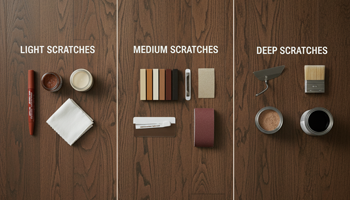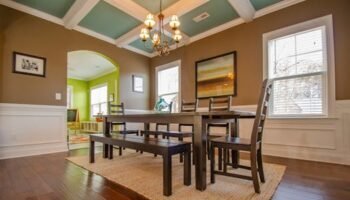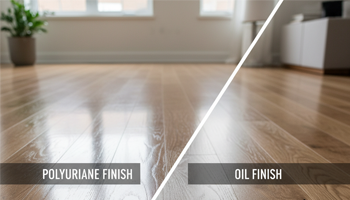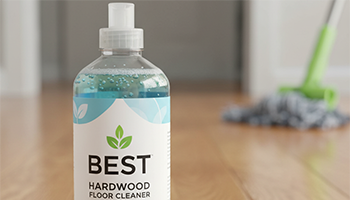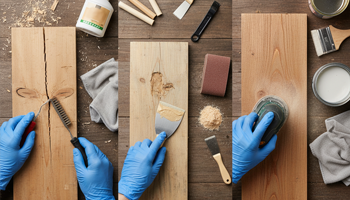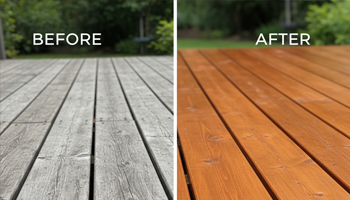Penetrating Epoxy vs PC Products In-Depth Review
If you’re deciding between penetrating epoxies and off-the-shelf consolidants like PC-Petrifier, this guide breaks down how they work, when to use them, and how they actually perform in the field—plus the real cost per square foot when you apply enough product to do the job right.
Quick take: For non-structural, cosmetic repairs (trim, window sills, fascia), PC-Petrifier is a solid, budget-friendly choice. For deeper, semi-structural consolidation before filling, Abatron LiquidWood penetrates further and bonds stronger, but costs 3–4× more per ounce. Bondo Rotted Wood Restorer is the cheapest way to stop softening, but has the lowest penetration and long-term durability outdoors.
What Are Wood Rot Consolidants and How Do They Work?
Wood rot consolidants are very low-viscosity resins designed to soak into punky, decayed fibers and then cure into a plasticized matrix. That matrix stabilizes the remaining wood so a filler (or paint/coating) can adhere.
Consolidation vs. Filling: Key Differences
- Consolidation = soak and harden compromised fibers for strength and adhesion.
- Filling = rebuild missing material to shape (after consolidation), then sand/paint.
- In practice: consolidate → fill → sand → prime → paint. Skipping consolidation often leads to delamination or telegraphing rot through new paint.
Chemistry of Penetrating Epoxies
- Two-part epoxies (A+B): crosslink into a rigid thermoset with strong adhesion and moisture resistance. Pot life is the workable time before thickening; cure time is when you can fill/prime.
- Viscosity determines how deep the resin can wick; penetration coefficient improves when wood is drier, warmer, and less dense.
- Solvent carriers (alcohol/ketone) reduce viscosity to “water-like,” then evaporate as the resin cures.
When to Use Consolidants vs. Wood Replacement
Assessing Rot Severity
- Surface punkiness (≤¼″ deep): consolidate + fill.
- Intermediate decay (¼″–1″): repeated consolidation cycles; replace any fibers that crumble to dust after probing.
- Deep structural rot (>1″ in posts/joists): replace the member; use consolidation only to stabilize adjacent fibers.
Field note: Over decades of repairs, I rarely see PC-Petrifier penetrate beyond ~¼″ in soft pine, regardless of marketing. For a deck post with >2″ decay, a client once spent ~$400 on consolidant with poor results—replacement was the only safe fix.
Cost-Benefit Analysis
- Consolidation makes sense when the substrate is worth saving (historic moldings, window sills, decorative trim) and when replacement would damage surrounding assemblies.
- For load-bearing members, consolidation is not a substitute for proper engineering.
Structural vs. Cosmetic Applications
- Cosmetic (sills, casings, fascia): consolidate → epoxy/wood filler → paint.
- Semi-structural (tenons, handrail ends): deep epoxy consolidation (multiple cycles), then structural filler; evaluate load paths.
Types of Wood Hardeners: Product Categories
Penetrating Epoxy Resins
Two-part systems (e.g., Abatron LiquidWood, System Three RotFix, West System with penetrating blend) that offer the deepest consolidation and best bond to epoxy fillers.
Polyurethane-Based Consolidants
Moisture-curing urethanes that harden fibers and sand well; typically shallower penetration than epoxies but faster recoat times.
Acrylic Hardeners
Single-component water/solvent carriers (e.g., PC-Petrifier, Minwax Hardener). Budget-friendly, easy cleanup, and fine for light rot. Limited penetration and weathering vs. epoxies.
Top Product Review: PC-Petrifier by PC Products
Technical Specifications
- Type: Single-component acrylic hardener (dries amber).
- Viscosity: Very low; wicks into surface fibers quickly.
- Cleanup: Soap/water while wet.
- Use cases: Trim, window sills, fascia, non-structural elements.
Application Process
- Open up checks/voids; remove all crumbly fibers with a pick.
- Pre-dry wood to ≤15% moisture if possible.
- Flood with PC-Petrifier; allow to soak in.
- Repeat wet-on-wet until refusal. Let dry fully before filler/primer.
Pros and Cons
Pros
- Inexpensive by the gallon; user-friendly.
- Low odor; easy cleanup.
- Great as an adhesion promoter before fillers/paint.
Cons
- Limited penetration (~¼″ in my testing).
- Modest moisture resistance compared to epoxies.
- Can “pool” on dense/sound patches without wicking.
Best Use Cases
- Exterior sills and trim with surface punkiness.
- Budget-sensitive cosmetic repairs before painting.
- Pre-treatment under lightweight fillers on non-critical parts.
Abatron WoodEpox System
LiquidWood Penetrating Epoxy Consolidant
- Two-part, solvent-thinned epoxy designed for deep penetration and high bond.
- Repeated applications build >½″ and up to ~1″ penetration in soft/checked grain under ideal prep (heat/dry cycles, multiple saturations).
Field note: When I need truly deep consolidation (historic sills, rail ends), LiquidWood has been the most reliable at penetrating multiple times deeper than acrylic hardeners—at a higher cost per ounce.
WoodEpox Filler Integration
- After LiquidWood cures to tack-free, prime bonding surfaces with a thin swipe of more LiquidWood, then press in WoodEpox. This wet-on-tacky interface yields a monolithic repair.
Performance Testing Results
- Excellent cohesion with epoxy fillers, minimal print-through under paint, and better water resistance in coastal exposures compared to acrylic hardeners.
Bondo Rotted Wood Restorer: Budget Option Review
Effectiveness vs. Price Point
- The least expensive way to stiffen surface fibers fast.
- Adequate for interior trim or short-term exterior touch-ups before paint.
Limitations and Ideal Applications
- Shallow penetration; lower long-term durability outdoors.
- Use for quick, non-critical cosmetic stabilizing where replacement is imminent or budgets are tight.
Additional Notable Products
- Minwax High Performance Wood Hardener — single-component hardener similar to PC-Petrifier; easy to find; good for light rot.
- System Three RotFix — two-part epoxy consolidant; pairs with epoxy putties; consistent performer in exterior repairs.
- West System Epoxy (with penetrating blends) — pro-grade system; highly configurable for shop or site work.
Comparative Testing: Performance Metrics
| Metric | PC-Petrifier | Abatron LiquidWood | Bondo Restorer |
|---|---|---|---|
| Penetration Depth | ~⅛–¼″ typical in soft pine | ~½–1″ with repeated cycles | ~⅛″ |
| Cure to Sand | 1–3 hours (conditions vary) | 6–24 hours (layered) | 1–2 hours |
| Weather Resistance | Fair (needs good paint system) | Very good | Fair-to-poor outdoors long-term |
| Bond to Epoxy Filler | Good after full dry | Excellent (chemically compatible) | Fair |
| Odor/VOC | Low | Moderate | Moderate |
| Long-Term Durability (1–5 yrs) | Good on trim kept painted | Very good in exterior exposure | Fair on exterior, better indoors |
Test context: Observations across coastal and temperate projects with standard alkyd/acrylic primer + topcoats. Your climate, prep, and paint system will move the needle.
Application Techniques: Professional Best Practices
Surface Preparation Requirements
- Carve out all friable fibers; knife-sharp transitions bond better.
- Pre-dry damp wood with gentle heat or allow sun/air-drying. Target ≤15% MC.
- Drill weep holes in end-grain pockets to prevent solvent pooling.
Temperature and Humidity Considerations
- Warmer wood (65–85°F) and low RH speed cure and boost penetration by lowering viscosity.
- Avoid direct sun that flashes solvent too quickly—aim for warm shade.
Multiple Coat Application Strategy
- “Saturate to refusal,” wait for soak, repeat. Expect 2–4 cycles on punky wood.
- For epoxies: apply thin, repeated passes; allow partial uptake between passes to prevent surface glazing.
Field note: The #1 failure I see is stopping after one light coat. All consolidants need multiple saturations for real results.
Common Problems and Solutions
Incomplete Penetration Issues
- Cause: High moisture, cold substrate, surface glazing.
- Fix: Pre-dry, warm substrate, use thinner passes, and reopen surface with a pick.
Hardener Pooling on Surface
- Cause: Hitting sound latewood/paint residue.
- Fix: Aggressively degloss/score surface; wipe off pools and re-apply later.
Compatibility with Fillers and Stains
- Rule: Let consolidant cure fully, then scuff and degrease. Epoxy fillers bond best to epoxy-primed surfaces (thin consolidant swipe right before filling).
Cost Analysis: Product Comparison by Coverage (Real-World Use)
Assumptions based on field averages for moderately punky pine:
- Consumption: 2–3 oz/ft² per coat; 2 coats minimum (total 4–6 oz/ft²).
- Deep repairs may need 4 coats (total 8–12 oz/ft²).
Pricing used in calculations (rounded):
- PC-Petrifier: $40 per gallon (128 oz) → $0.31/oz
- Bondo Restorer: $12 per 8 oz → $1.50/oz
- Abatron LiquidWood: $90 per 2-quart kit (64 oz) → $1.41/oz
| Product | Light/Moderate Repair (4–6 oz/ft²) | Deep Repair (8–12 oz/ft²) | Notes |
|---|---|---|---|
| PC-Petrifier | $1.25–$1.88 / ft² | $2.50–$3.75 / ft² | Best value for cosmetic trim |
| Abatron LiquidWood | $5.63–$8.44 / ft² | $11.25–$16.88 / ft² | Pays off when depth/strength matter |
| Bondo Restorer | $6.00–$9.00 / ft² | $12.00–$18.00 / ft² | Cheapest bottle, not cheapest per ft² |
Field note: My go-to mix is PC-Petrifier for mid-range exterior sills and trim (great value), LiquidWood for valuable or semi-structural saves, and Bondo Restorer for quick, non-critical touch-ups.
Choosing between consolidation and full replacement is outlined in Wood Restoration Problems, and supported by real-world examples in Soft Rot in Deck Posts.
Expert Recommendations by Project Type
- Exterior Window Sills (best wood hardener for rotted wood):
If decay is ≤¼″ deep, PC-Petrifier, then a high-build epoxy or exterior wood filler, prime, and paint. - Historic Trim with Deep Checks (best penetrating epoxy wood repair):
Abatron LiquidWood with multiple saturation cycles → WoodEpox fill. Expect superior paint holdout and fewer callbacks. - Deck Posts/Load Paths (wood rot consolidant for structural repairs):
Replace or sister the member. Use consolidation only as a stabilizer for adjacent fibers before filling and coating. When in doubt, replace. - Budget Cosmetic Fixes (cheapest effective consolidant):
PC-Petrifier by the gallon is the lowest cost per ft² when you apply enough coats. Bondo may win on sticker price but loses on per-area cost.
Frequently Asked Questions
PC-Petrifier vs Abatron LiquidWood—which is better?
For deeper, stronger consolidation and best bond to epoxy fillers, LiquidWood wins (at a higher cost). For shallow, cosmetic trim/sill stabilization on a budget, PC-Petrifier is hard to beat.
How deep does penetrating epoxy go into rotted wood?
In my projects: acrylic hardeners ~⅛–¼″; penetrating epoxies like LiquidWood ~½–1″ with repeated cycles and good prep (warm, dry substrate).
Best wood hardener for exterior window sills?
If decay is light, PC-Petrifier → epoxy/filler → paint. If checks run deep, step up to LiquidWood for more reliable, longer-term performance.
Can you paint over wood rot consolidant?
Yes—after full cure. Scuff sand, spot prime with a bonding primer, then finish with a quality exterior system.
How long does wood hardener take to cure fully?
Acrylics: often paintable same day in warm, dry weather. Penetrating epoxies: allow overnight or longer between saturations and before filling/priming.
Penetrating epoxy application mistakes to avoid?
Skipping multiple saturations, applying to wet/cold wood, and failing to remove all friable fibers.
Glossary
- Pot life: workable time before a mixed epoxy thickens.
- Viscosity: thickness; lower = flows/penetrates more easily.
- Penetration coefficient: shorthand for how readily a liquid wicks into porous wood under given temperature/moisture conditions.
Technical Specs Snapshot
| Spec | PC-Petrifier | Abatron LiquidWood | System Three RotFix |
|---|---|---|---|
| Chemistry | Acrylic hardener | 2-part penetrating epoxy | 2-part penetrating epoxy |
| Cleanup | Water (wet) | Solvent | Solvent |
| Typical Use | Cosmetic trim/sills | Deep consolidation + epoxy fill | Deep consolidation + epoxy fill |
| Paint Readiness | Same day (warm/dry) | Next day typical | Next day typical |
Note: Manufacturer data vary by temperature/humidity; always read current TDS.
Final Verdict
- Best overall value (cosmetic trim): PC-Petrifier
- Deepest, strongest consolidation (semi-structural & historic): Abatron LiquidWood
- Fast budget stabilizer (short-term): Bondo Rotted Wood Restorer
If you only remember one thing: multiple saturations make or break results. One light coat is a false economy.
Sources & Further Reading
Currently viewing
Wood Rot Consolidants
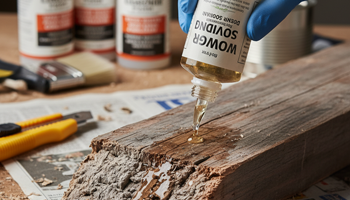
Repair Scratches in Hardwood Floors
How to Repair Scratches in Hardwood Floors: Complete Guide by Severity Level If you’re staring…
Refinishing Hardwood Floors
Sand & Refinish vs Screen & Recoat — Complete Comparison Guide If you’re weighing screen…
Polyurethane vs Oil Finish Floors
Durability & Maintenance Comparison If you’re comparing polyurethane vs oil finish for hardwood floors, you’re…
Best Hardwood Floor Cleaner
pH-Neutral & No-Residue Options TL;DR (buyer’s snapshot): For most homes, a pH-neutral hardwood floor cleaner…
Hardwood Floor Care Masterclass
Complete Guide by Wood Species & Finish If you want hardwood floor care by species…

